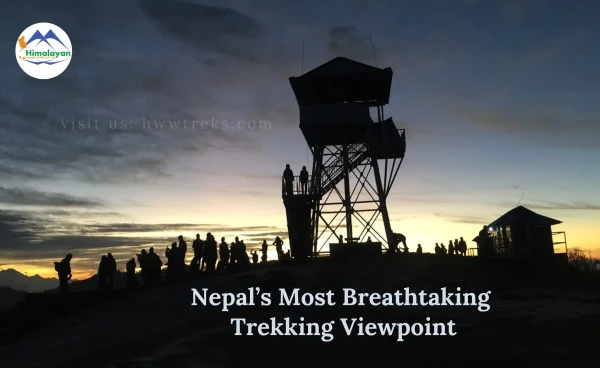- 07/08/2024
- Tags: Upper Mustang
- Dawa Tseten Gurung
Three Major Monasteries of Lo-Manthang
The region of Lo Manthang is renowned for its sacred monasteries, each standing as a testament to the spiritual devotion and artistic prowess of the local inhabitants. Journeying through the rugged landscapes of the Trans-Himalayan region, visitors are greeted by the awe-inspiring presence of three main monasteries that hold a special place in the hearts of the people of Lo Manthang.
Three major monasteries of lo-Manthang are Jampa Lhakhang (Jampa Monastery), Thubchen Monastery and Chode Monastery which hold profound cultural and spiritual significance. All three monasteries belong to Sakyapa sect of Tibetan Buddhism. Therefore Lo Manthang, located in the Mustang district of Nepal, is a historically and culturally significant region in the Himalayas of Nepal. Here, I'll introduce three of the major monasteries in Lo Manthang.
Contents [hide]
Jampa Monastery (Jampa Gompa)
The Jampa Monastery, located within the Walled City of Lo-Manthang, holds the distinction of being the oldest Sakya monastery in the area. Jampa Gompa, also known as Jampa Lhakhang, is one of the four major monasteries in Lo Manthang. Its construction dates back to the early 14th century, under the rule of the renowned King Angon Sangpo, who was the second son of Ama Pal. The Gompa is a three-story structure adorned with intricate woodwork and traditional Tibetan-style paintings. Its whitewashed walls contrast beautifully with the stark, brown surroundings, creating a picturesque sight. The walls of Jampa Gompa are notable for their thickness, measuring 5'4'' and constructed using mud.
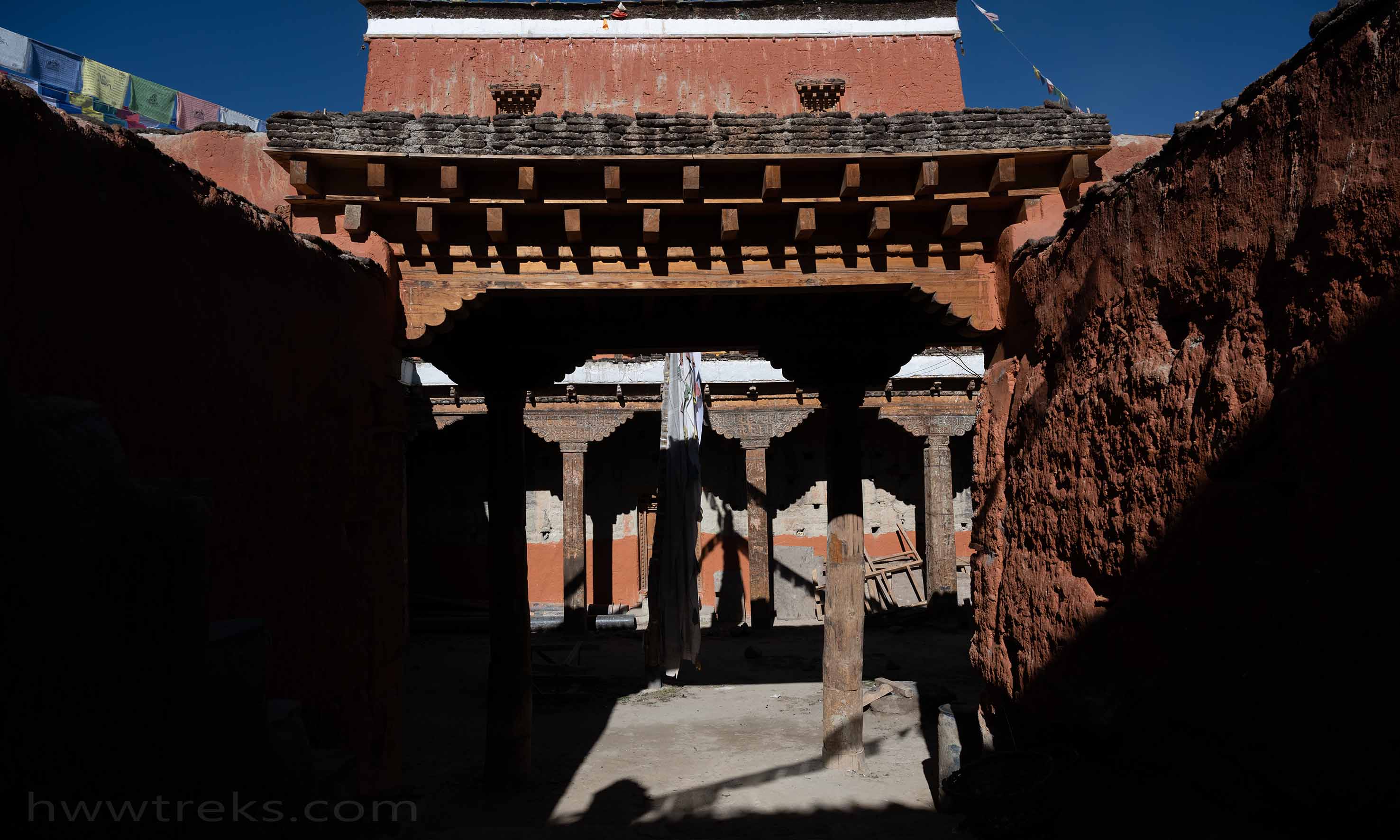
The monastery houses a massive statue of Maitreya Buddha that dominating the space on both the ground and first floors, depicted in a meditative posture. Jampa Buddha is considered the future Buddha, embodying compassion and enlightenment.
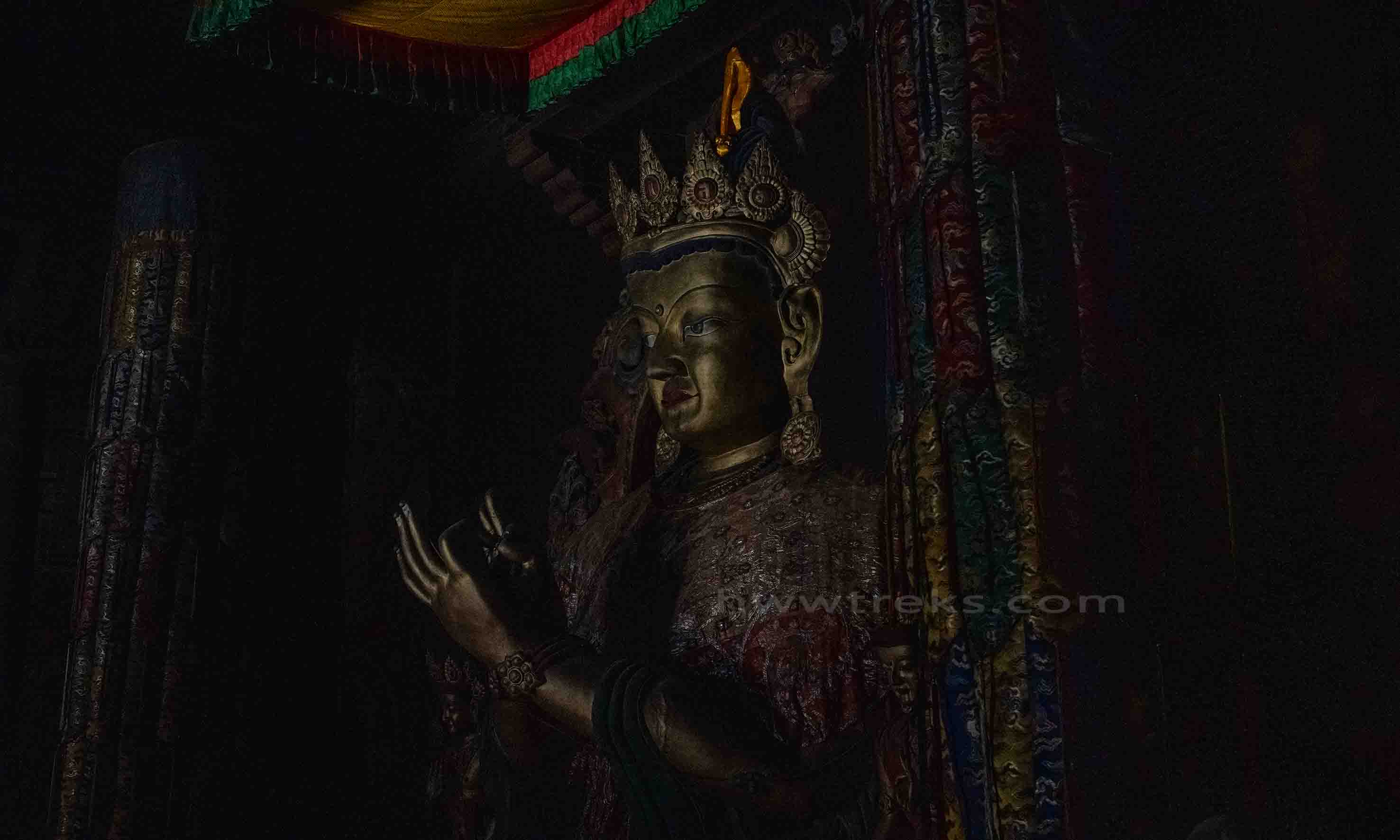
The location of Jampa Gompa at the heart of Lo Manthang offers magnificent views of the surrounding Mustang landscape. The Gompa's rooftop provides a panoramic view of the walled city, Chhonhup valley, and the distant Annapurna and Dhaulagiri mountain ranges.

However, what truly sets Jampa Gompa apart is the presence of 108 ancient mandalas, varying in size, adorned with gold and silver and embellished with turquoise, coral, and gemstones. These mandalas depict various aspects of Buddhist iconography. The first floor showcases mandalas featuring Bodhisattvas and themes from the Mahayana tradition. The second floor, unfortunately not accessible to the general public, houses mandalas representing the most secretive Vajrayana tradition of Tibetan Buddhism. On the ground floor, one can find depictions of stories from the life of Buddha Shakyamuni and lesser gods.
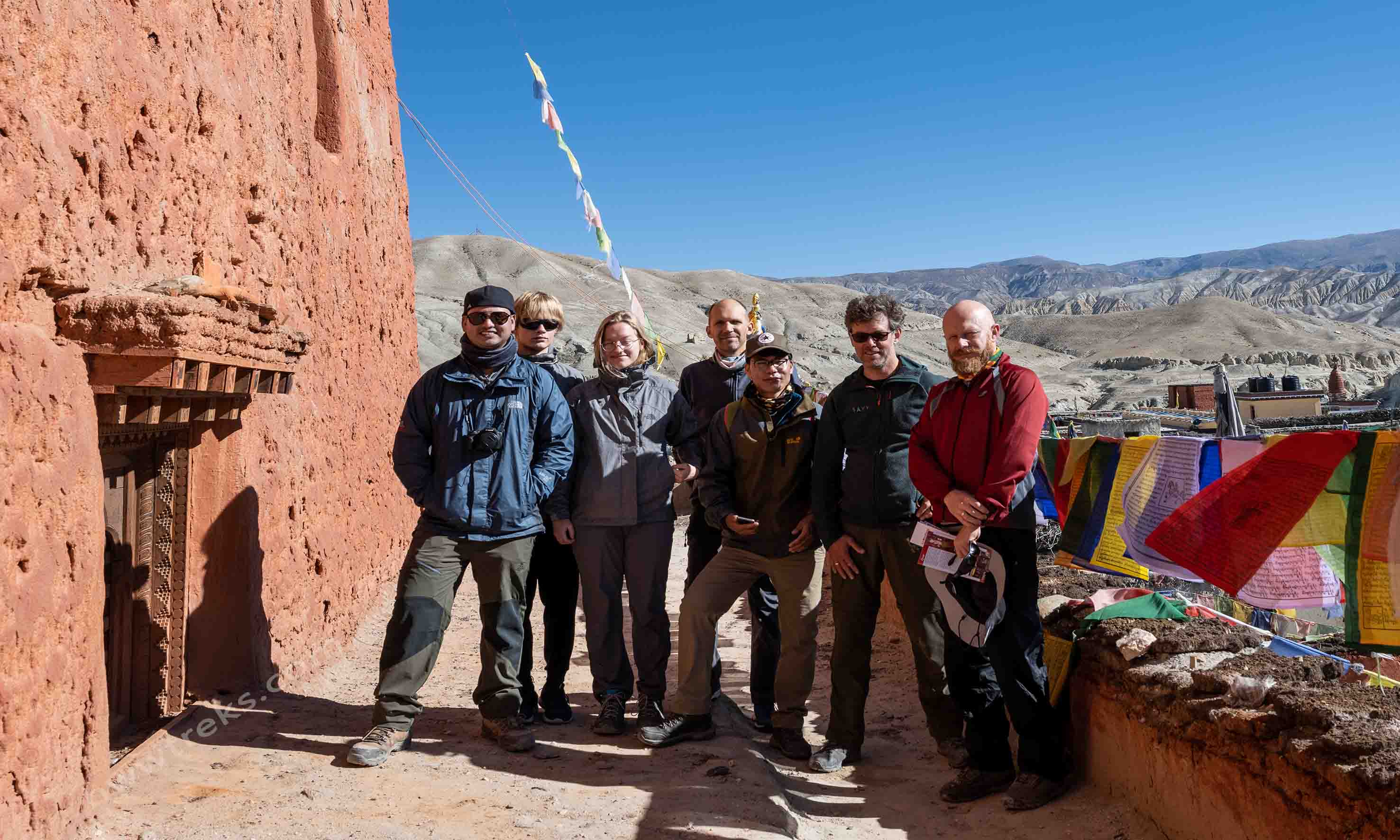
A visit to Jampa Gompa is not only an exploration of ancient religious and architectural marvels but also an opportunity to witness a distinctive culture that has withstood the test of time. It's a journey back in time to a place where tradition, spirituality, and the harsh Himalayan environment have created a unique and enduring way of life.
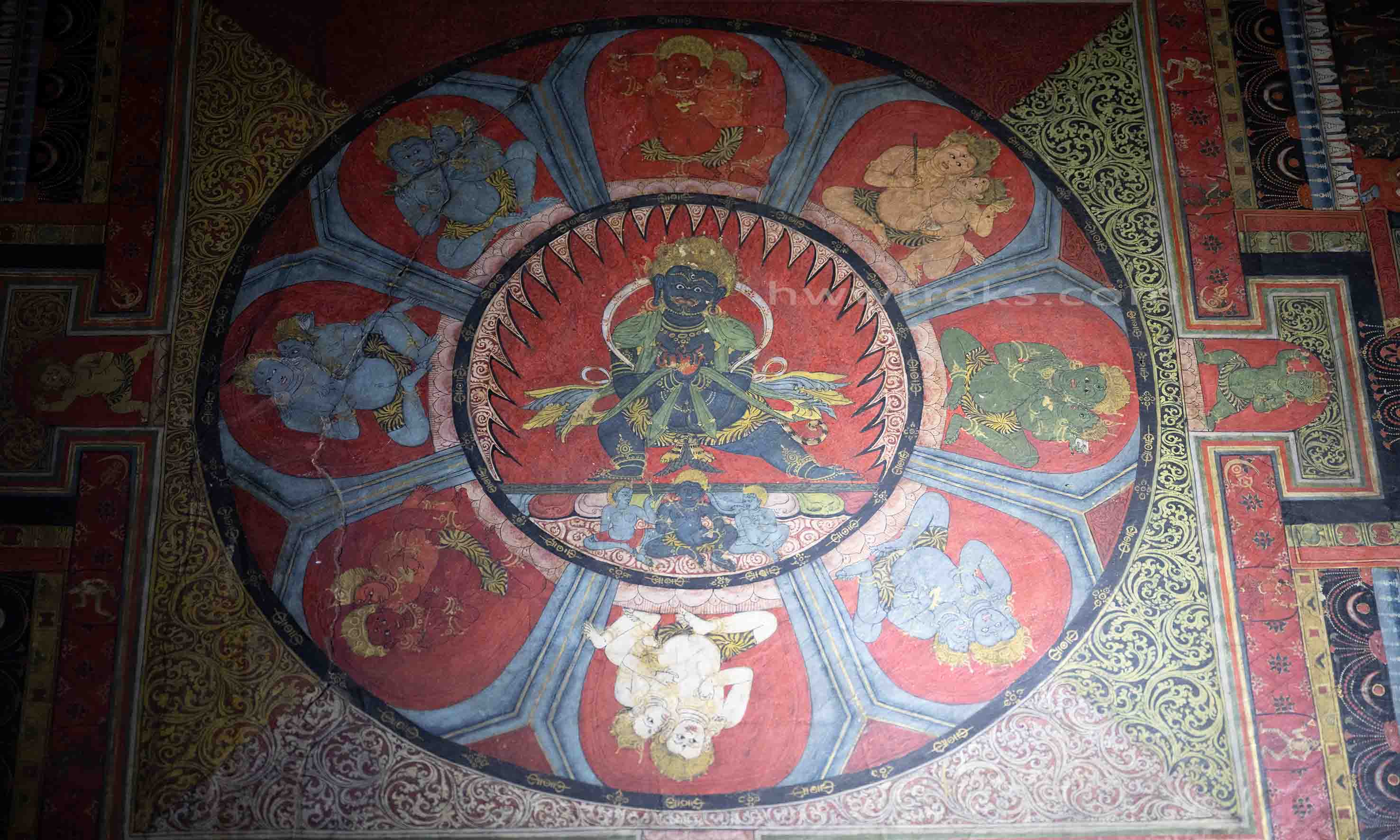
Thupchen Monastery
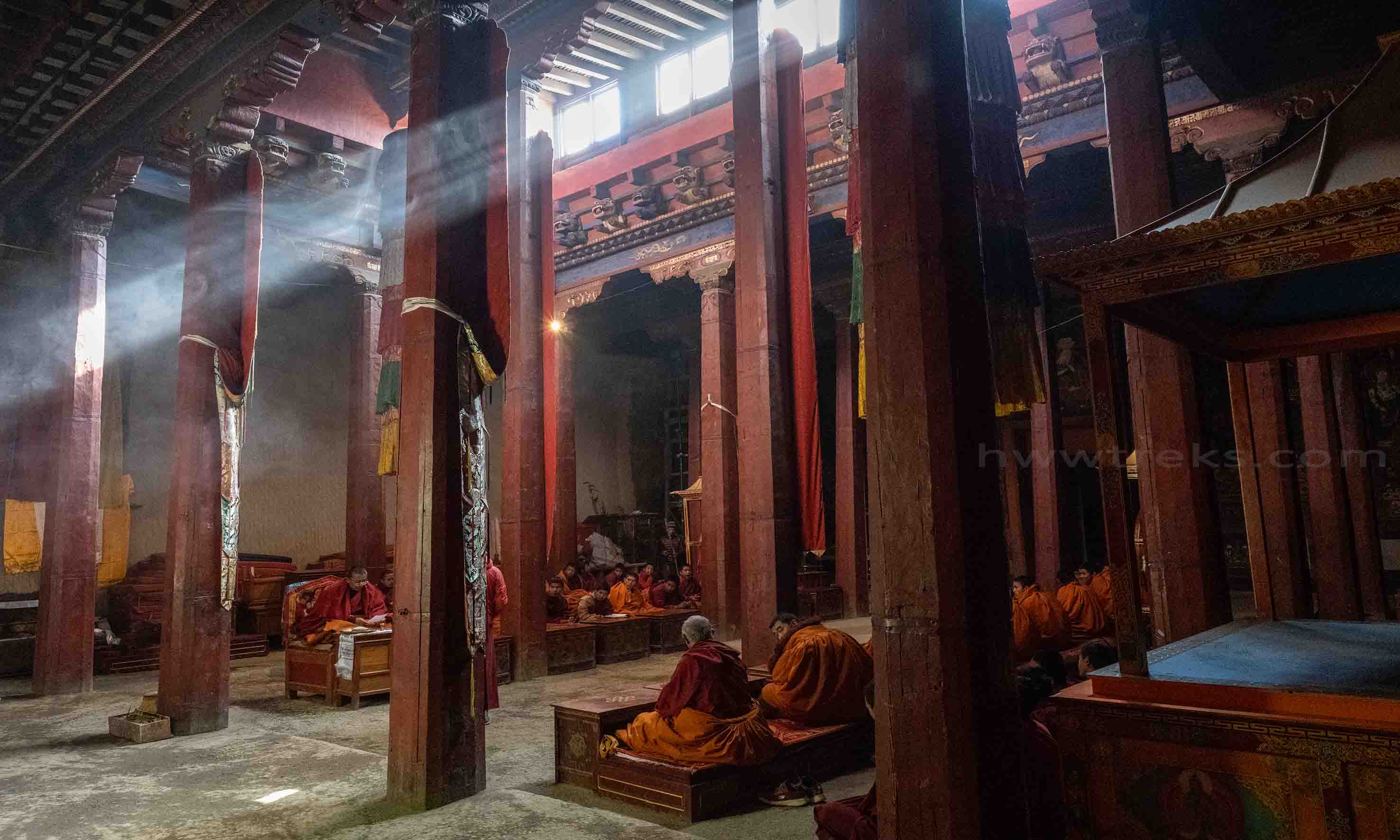
The Thupchen Monastery is one of the three significant monastic complexes in Lo Manthang. Thupchen Gompa, constructed during the reign of the third king of Lo, Tashi Gon, in the late 15th century. The monastery boasts intricate Tibetan-style architecture with its whitewashed walls and finely detailed woodwork. The murals, sculptures, and paintings within the monastery provide a window into the rich heritage and craftsmanship of the region.

This monastery has played a crucial role in preserving the spiritual and cultural traditions of the region. Thubchen monastery is use for conducting Buddhist religious ceremonies and rituals. Like other monasteries in Mustang, Thupchen Monastery is a vibrant center for the annual Tiji Festival, which takes place in May and draws pilgrims and tourists alike. During this festival, the monks perform intricate masked dances and rituals to celebrate the triumph of good over evil. The ambiance provides an ideal environment for those seeking inner peace and reflection.
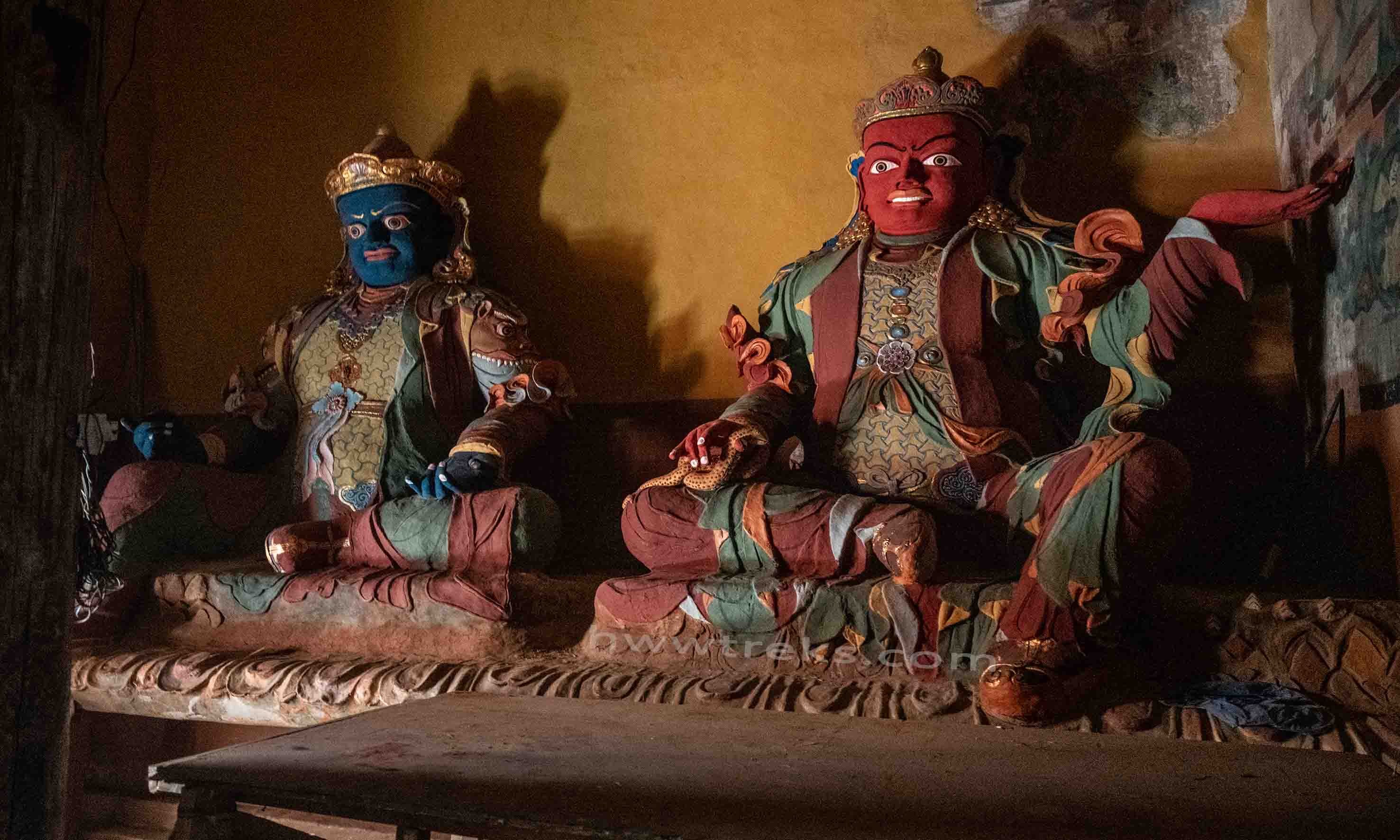
Upon entering the Gompa, visitors are greeted by the Sgo-Mchog room, adorned with four larger-than-life statues of the protector kings of the four directions, elegantly placed on raised platforms. The main hall, known as "Dhunkhang," boasts wooden pillars and a ceiling rafter intricately engraved with sacred mantras. The walls and ceiling of the Dhunkhang are adorned with elaborate paintings of buddhas and bodhisattvas, embellished in gold, silver, and vibrant colors. These divine figures are depicted in various hand gestures, known as mudras. Within the hall, you will also find three earthen statues of Avalokitesvara (Chenrezig), Manjushri (Jampayang), and Padmasambhava (Guru Rinpoche). The centerpiece of the Gompa is the Great Buddha (Thupchen), crafted from copper and meticulously polished in gold, seated in a serene posture.
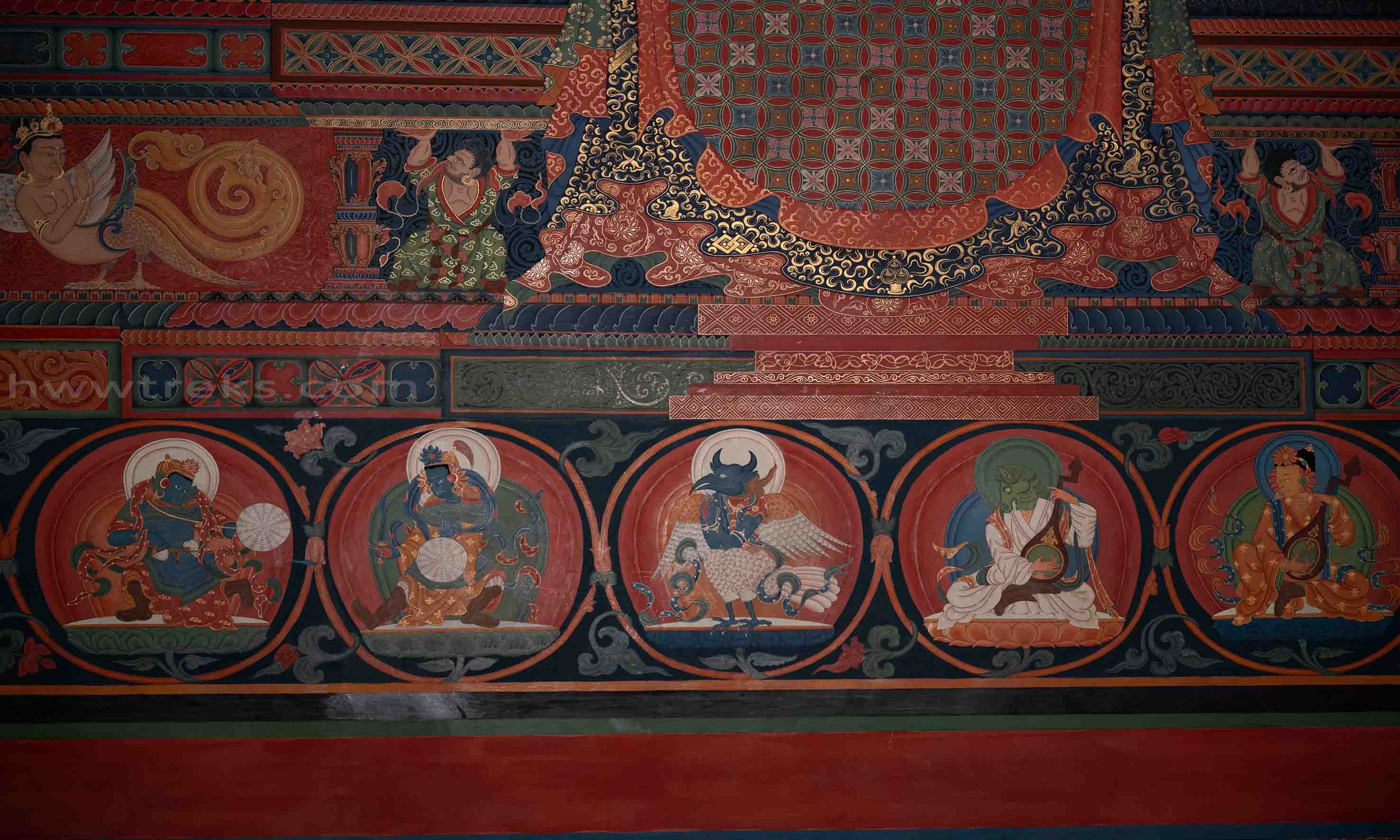
Chode Monastery
The Chode Monastery, situated in the picturesque walled city of Lo Manthang, within the mystical Mustang region of Nepal, is a significant center of Tibetan Buddhism, steeped in history and cultural heritage. The Chode Gompa, known as Dragkar - Thegchen Ling, was established in the late 13th century CE by King Ama Pal and the esteemed scholar Ngorchen Kunga Sangpo, during the reign of the first king of Lo. It serves as the primary Sakya Gompa in Lo-Manthang and is currently inhabited by monks and esteemed lamas. Additionally, it holds significant importance as a center for Buddhist studies and modern education. Following a devastating earthquake in the 16th century CE, Chode Gompa suffered extensive damage, leading to the relocation of precious objects, including masks used in the Tiji festival, to Choprang Monastery. Unfortunately, Choprang Monastery experienced a severe fire in the 17th century CE, resulting in the destruction of numerous artifacts. However, the salvaged items were subsequently returned to Chode Gompa, which had been reconstructed within the confines of the Walled City.
The monks from Chode Monastery takes part in the annual Tiji Festival, a vibrant celebration held in May that attracts pilgrims and travelers. During the festival, the resident monks perform intricate masked dances and rituals, bringing the town to life.
The outer walls of this monastery add beauty of the lo-Manthang town which is clearly seen from the trail to Chosar valley in the awe-inspiring vistas of Himalayas. A visit to Chode Monastery will provide you an experience to witness the lifestyle of monks in Lo-Manthang.
Monasteries Summary
You must purchase a ticket from the Chode Monastery to visit all three monasteries. The ticket will cost NPR 1000 per person which allows you to visit all three monasteries. The revenue that the monastery get from the tickets sold is totally used for the administration cost of monastery. Therefore your purchased ticket will not be waste of money but a great contribution.
A visit to these three monasteries and the surrounding walled city of Lo Manthang offers a unique opportunity to immerse yourself in a world where ancient traditions, spirituality, and the stark beauty of the Himalayan landscape harmonize. It's a place where you can witness a culture that has remained largely unaffected by the outside world, providing a profound and enriching experience for travelers and pilgrims alike.
Read more about mustang here;
Lo Manthang Town Map

